Horse Feet

Life on the farm of our working horses.
Thanks for the questions and comments regarding the post yesterday. So grooming, feeding, turnout area and horse feet….. Today we are going to start at the bottom of the horse and talk about feet. But to talk about horse feet you need to start at the front of the horse, what they eat and the environment that they live in. Starting at the bottom, “the feet”, really starts at the “environment and feed”. We will do a post about the feed and environment, soon.
Let’s talk feet. Think of a horses feet like your fingernails or toenails, horses like people, are not the same. Like people, horses hooves change over time as in “years or age” of the horse. When you are young, your fingernails are elastic and relatively healthy, but as you age the growth changes and sometimes you have an accident that will cause your fingernail or toenail to deform, horses have the same issues as people. The old saying goes, no hoof, no horse. Is as true now, as it was hundreds of years ago.
Let talk just about our horse feet and our horses. First we have horses that range in age from as young as new borns to twenty something year old horses, 17 horses in total. We do our own farrier work, as a trained professional farrier, I personally take total responsibility of each of our horses feet. If something requires additional attention, I will consult with our veterinarians. Our horses are draft or draft cross type horses. The type of work our horses do and the surfaces we work on require shoes on most but not all of our horses. Every horse on our farm requires hoof trimming several times per year. The intervals between trimming depends on the individual horse and the seasons of the year. In the winter the hooves grow slower and in the summer they grow faster. Each season has its unique requirements for feet care. Like humans, in the winter, especially in areas that have snow and ice we use footwear that protects our feet from the elements and gives us some type of traction so we don’t slip on ice. In the summer of on the beach we may tend to go barefoot with no problems. Horses are no different depending on the environment, we make judgments that we have gained over decades of experience on what works for our horses.
We look at our horses feet every day visually watching them walk to see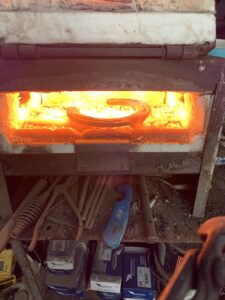
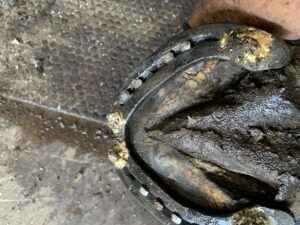
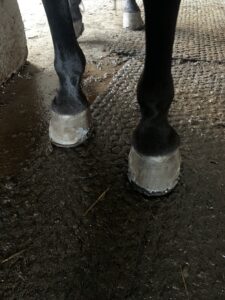
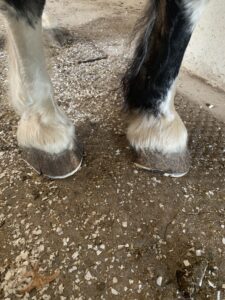
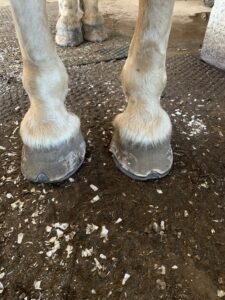 if they have their normal stride, if the feet are chipped, or the sound of a loose shoe. If something is not right that’s the time to take a closer look. This is just an extremely brief overview of our hoof care program. Keep the questions coming, until next time………
if they have their normal stride, if the feet are chipped, or the sound of a loose shoe. If something is not right that’s the time to take a closer look. This is just an extremely brief overview of our hoof care program. Keep the questions coming, until next time………